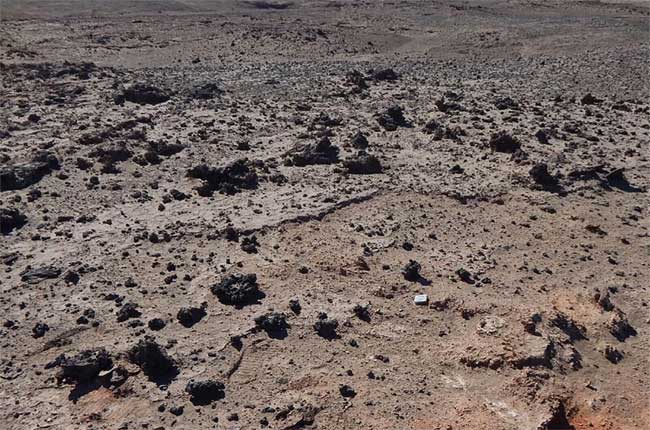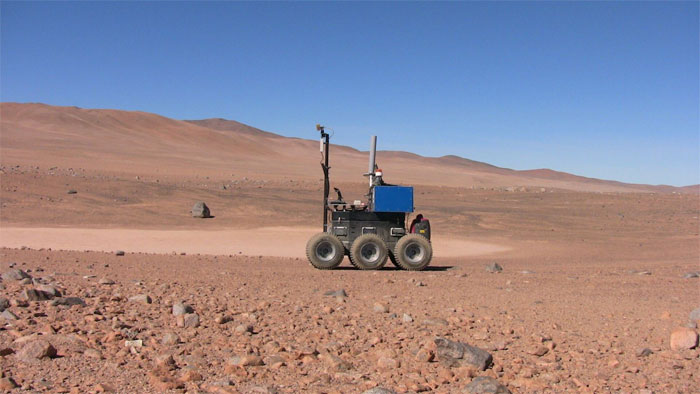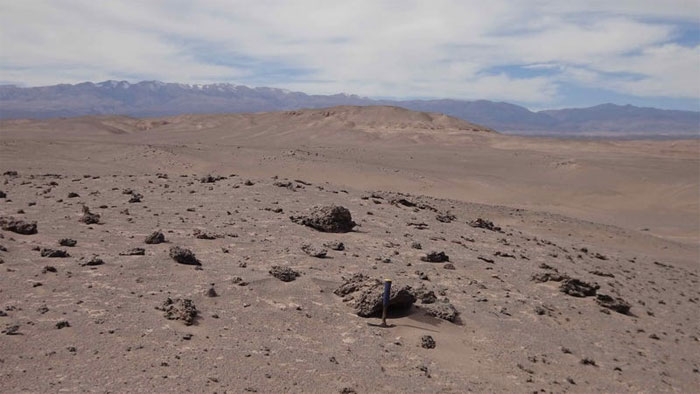The dark glass fields scattered across the world’s driest desert, the Atacama Desert, were created by a comet explosion approximately 12,000 years ago.
The Atacama Desert in Chile is renowned for being used as a site to simulate extraterrestrial environments, such as those found on Mars. According to a recent study, researchers believe that this desert was the location of a comet explosion powerful enough to create massive silicate glass fragments that still exist today.

Researchers believe that the Atacama Desert is where a massive comet explosion melted sand into silicate glass. (Photo: Pete Schultz/Brown University)
According to research published on November 3 in the journal Geology, around 12,000 years ago, extreme heat transformed the sandy land of Atacama into vast glassy areas stretching 75 km, but researchers are uncertain about what caused such a dramatic transformation.
The Atacama Desert is the driest land on Earth, with extremely low humidity and rainfall. The glass found in the desert, which has been fragmented, contains many small mineral fragments typically found in meteorites that fall to Earth.
The minerals found in this type of glass match the particles collected by NASA’s Stardust mission, which sampled a comet known as Wild 2. Researchers are confident that the minerals found in the Chilean desert are remnants left by a comet similar to Wild 2 when it exploded over the desert and “melted” the sand.
Pete Schultz, the study’s author and a professor emeritus of geological sciences at Brown University, stated: “This is the first time we have clear evidence of terrestrial glass types created by thermal radiation and winds from a fireball explosion right on the surface.”
“To create such a powerful effect over a large area, it must have been a truly massive explosion. Many of us have seen fireballs streaking across the sky, but those are just small bursts compared to this explosion,” Professor Schultz added.

The European Space Agency (ESA) tests Mars rovers in the Atacama Desert. (Photo: ESA)
The striking glass fields, appearing in dark green or black, stretch across the eastern region of the Pampa del Tamarugal, situated between the Andes Mountains and the Chilean coastline. Although volcanic activity could also produce this type of glass, there is no evidence to suggest that the Atacama glass formed in that manner.
Previously, researchers believed that ancient wildfires might have been responsible for creating glass. This area was once a grassy wetland. If those ancient grasses were burned in widespread wildfires, some believed it could produce glass.
However, the composition of the glass in Atacama is more complex. Upon closer inspection, it appears that the glass fragments were twisted, folded, rolled, and tossed while still molten. Scientists believe this could only occur during a massive explosion, generating horizontal winds akin to tornadoes.

Silicate glass scattered across the Atacama Desert, often referred to as “Mars on Earth.”
A chemical analysis of the Atacama glass shows that zircons, or minerals, have thermally decomposed to form baddeleyite crystals. This reaction could only occur when temperatures spiked above 1,650 degrees Celsius, a temperature certainly much higher than that of grass fires.
The analysis also revealed minerals such as cubanite and troilite, which have been found in Comet Wild 2 and various meteorites.
Scott Harris, a co-author of the study and a planetary geologist at the Fernbank Science Center in Georgia, stated: “These minerals indicate that this object has all the signs of a comet. This type of glass has the same mineral composition that we have seen in samples from the Stardust mission, providing strong evidence that what we are witnessing is the result of a comet gas explosion.”
Researchers are now focusing on dating the Atacama glass to ascertain its exact age, as well as the size of the comet. They speculate that the impact occurred around 12,000 years ago, coinciding with the time large mammal species disappeared from the area.


















































